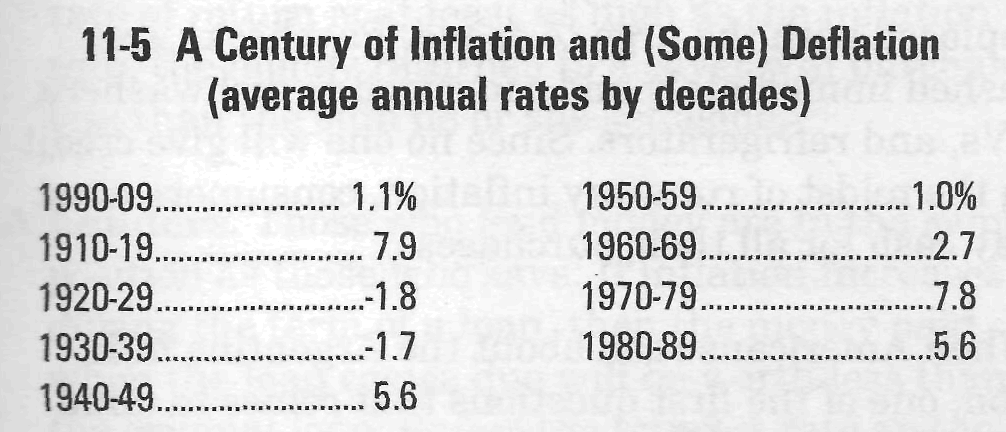
- •Chapter 11 money & financial institutions
- •11.1. Money
- •11.2. Money Today
- •11.3. The Development of Banking
- •11.4. Banking Today
- •11.5. How the Banking System "Creates" Money
- •11.6. The Federal Reserve System
- •11.7. The Value of Money Can Change
- •11.8. What are the Causes of Inflation?
- •11.9. Who Suffers or Benefits from Inflation?
11.7. The Value of Money Can Change
Have you ever heard someone say something like this?
"When I was your age, money could buy a lot more than it can these days. Hot dogs, candy bars, and soft drinks all cost a nickel. Seems like you can't buy anything for a nickel any more. As for quarters, well, you could see a movie or buy a loaf of bread, or a gallon of gas for a quarter back then. Those we're the good ol' days."
In fact, the dollar was worth more "in the good ol' days," and prices were a lot lower than they are today.
Economists use the terms purchasing power, or
value, to describe the quantity and quality of goods and services one can buy with money. When prices increase, money cannot buy as much. Its purchasing power declines. When prices fall, the opposite occurs. Or, to put it another way, when prices rise, the value of money falls; when prices fall, its value rises.
An extended period of rising prices is called inflation. A time when prices are falling is called deflation. The value of the dollar decreases during periods of inflation, and increases during periods of deflation.
The purchasing power of the dollar has been shrinking during most of the 20th century. This is illustrated in Table 11-5. As you can see, inflation has been present in seven of the nine decades in this century. You can also see that despite the general shrinkage in the value of the dollar, there were two decades of deflation in which its buying power increased.

11.8. What are the Causes of Inflation?
Demand-Pull Inflation. A situation in which there is "too much money chasing too few goods" is often described as demand-pull inflation. When demand increases faster than industry's ability to satisfy that demand, prices increase. During the Vietnam War, for example, factories that might have been producing consumer goods turned instead to the production of goods for use in the war. Government spending for military goods increased the purchasing power of many Americans. The result was an increase in the demand for goods and services at the very time industry's ability to satisfy that demand was being redirected. Since it was impossible to increase output to satisfy demand, prices rose.
Cost-Push Inflation. A period of rising prices due to an increase in the cost of production is called cost-push inflation. When, for example, the price of oil increases, as happened in 1974 and 1980 when OPEC oil boycotts raised the price of petroleum to record levels, severe cost-push inflation can develop. When this happens management may choose to raise prices to maintain profits. With prices going up, workers often ask for wage increases to keep up with the increased cost of living, and so on, and so on, in an inflationary spiral. Similarly, efforts by producers to increase profits by increasing prices rather than by reducing costs could also trigger an inflationary spiral.
